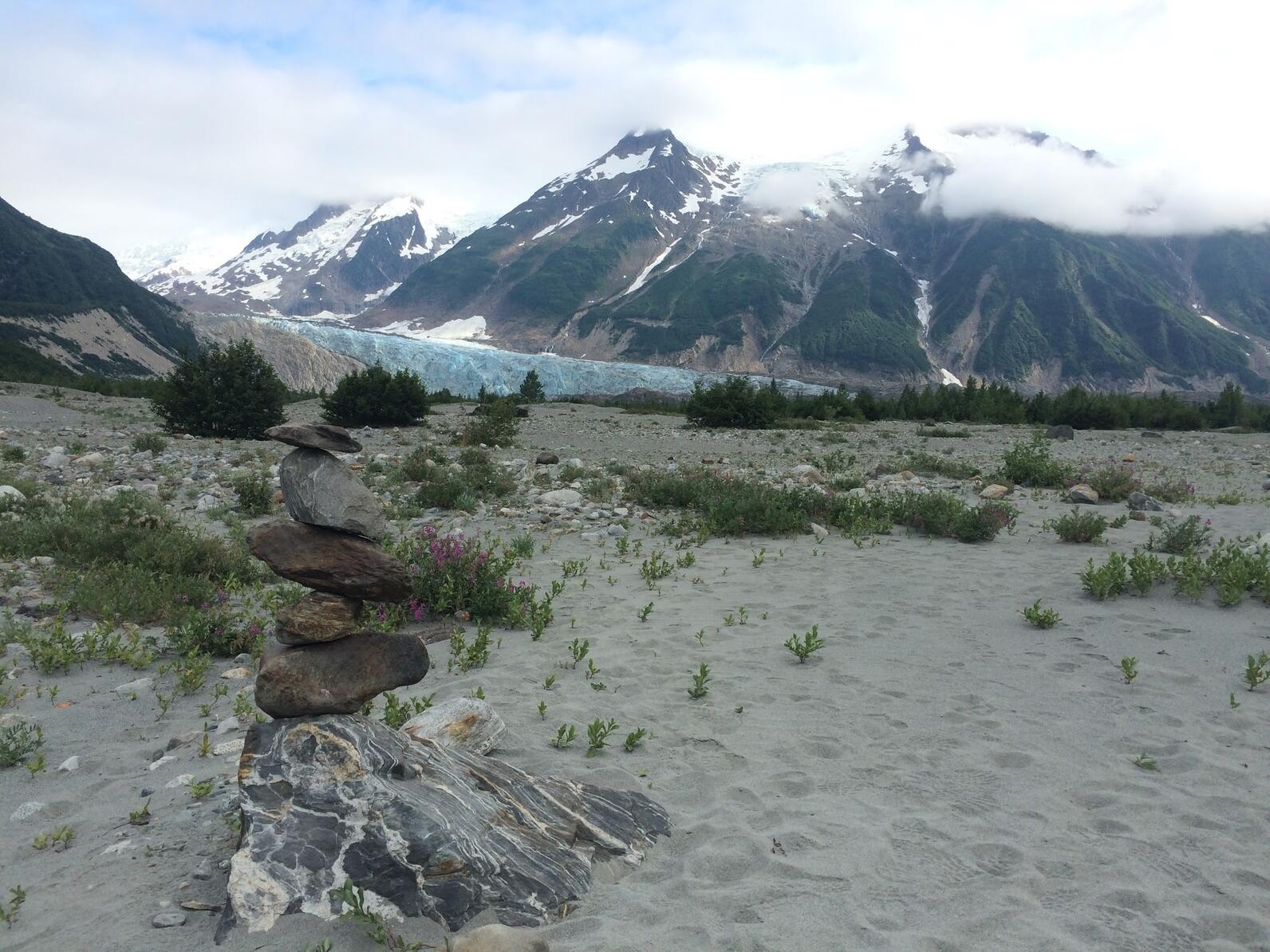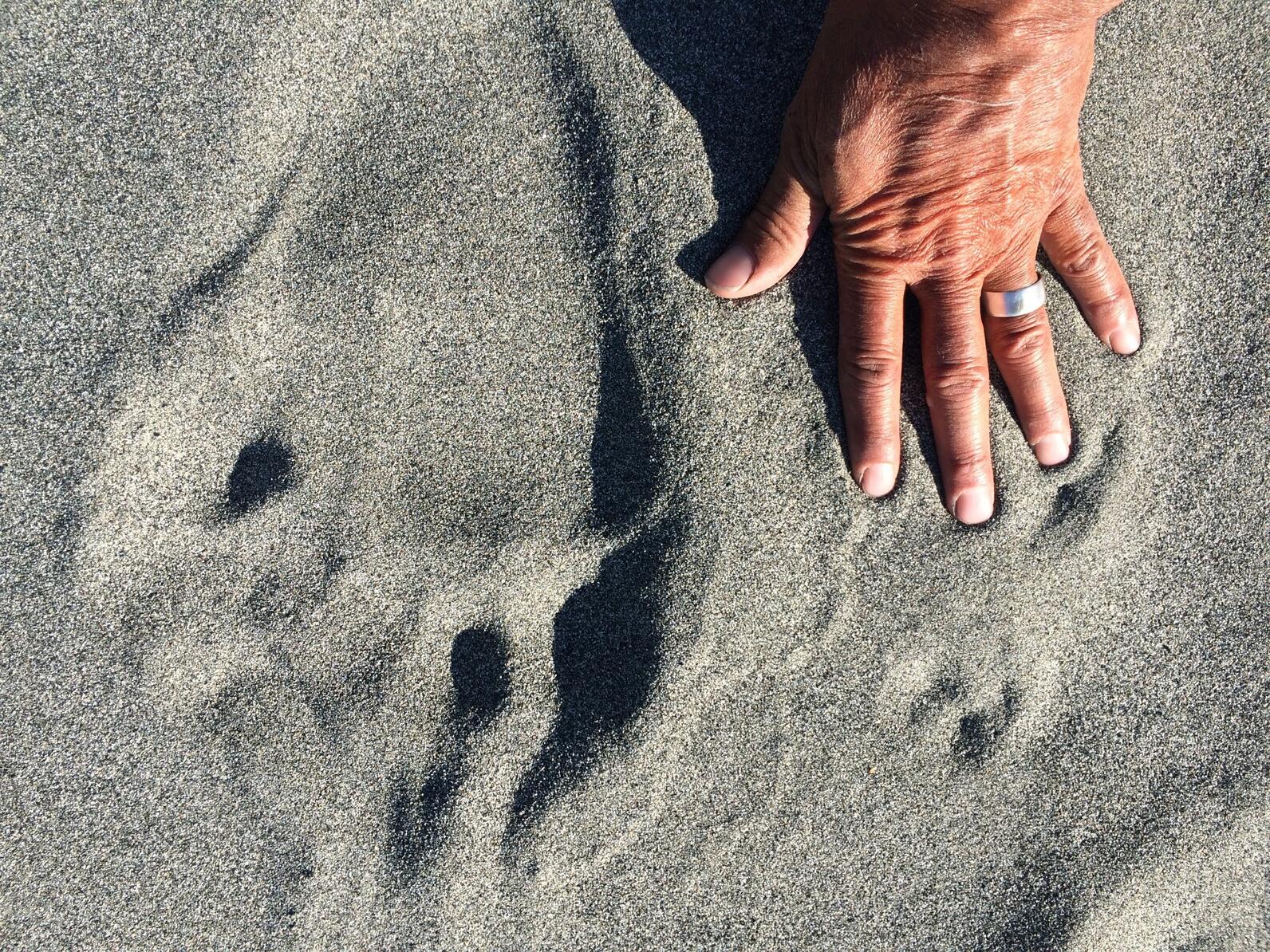Sixteen days, fourteen friends, five rafts and one of the great wilderness river stretches: the Tatshenshini River in southwestern Yukon, Canada. We were prepared for rain, cold, beauty, long rowing days, short nights, salmon fishing, and potentially grizzlies. It was the summer of 2016.
We managed to put in at the wrong tributary which was flowing roughly 800 cubic feet per second (fps). This meant the first day involved pulling heavily loaded rafts through and over rocky and thinly watered passages. We had been told that by the end of our journey the river should be flowing 100,000 fps. By the second day we were floating well and dropping into the vast Tatshenshini-Alsek Provincial Wilderness Park, a massive UNESCO world heritage site established through the efforts by American and Canadian conservation groups to halt mining exploration and development in the area. Each of us had protectively wrapped our crampons and ice picks in anticipation of climbing onto Walker Glacier, an adventure that Sean, the mastermind and leader of this expedition, had assured us would be remarkable. Each day provided us with unexpected features, challenges and grand vistas.

The river expanded as we snaked through deep wilderness. Wild strawberries, occasional grizzly tracks, sunlight until well after midnight, eagles, brilliant wildflowers, heavy clouds, warming sun, and the steady flow of the Tatshenshini. We also began noticing high river debris, eroded banks, muddy turbulent water, and the occasional tree floating by. It was on the tenth day that we camped near Walker Glacier. Sean was perplexed as we were presented with a large waterway where ‘our’ glacier had once stood. Seven year earlier, Sean had climbed Walker from where we now gawked, some quarter mile from where we could now see Walker’s face. Over the next several hours we explored possible pathways and approaches to test our ice climbing gear and to stand atop the glacier. Alas it was not meant to be. Walker’s retreat had eliminated any potential climbing. Glaciers now became visible daily. What was shocking were the waterfalls spilling out from these massive beings. Locked in deep freezes for much of the year and cuddled within mountain ranges, we were hard pressed to understand what we were seeing. Just how could 2-3 global temperature degrees increase create such dynamic changes?

The river continued to grow as we journeyed. The signs of massive water events accumulated. Icebergs carved off the cliff faces of glaciers added to the beauty and the dangers. Our take out point to meet the aircraft to shuttle us out, sixteen days later was obliviated by debris and a raised landscape. The Tatshenshini had been expected to reach 100,000 cfs at our leave was actually 200,000 fps when we left her. Glacier melt and warm rains had accelerated the flow. I had anticipated magnificence. I had anticipated wildness and dynamism. What I had not expected was the sadness. I had not imagined that such a delicate balance holds together these exquisite webs of life. The river continued to grow as we journeyed. The signs of massive water events accumulated. Icebergs carved off the cliff faces of glaciers added to the beauty and the dangers. Our take out point to meet the aircraft to shuttle us out, sixteen days later was obliviated by debris and a raised landscape. The Tatshenshini had been expected to reach 100,000 cfs at our leave, was actually 200,000 fps when we left her. Glacier melt and warm rains had accelerated the flow. I had anticipated magnificence. I had anticipated wildness and dynamism.
What I had not expected was the sadness. I had not imagined that such a delicate balance holds together these exquisite webs of life. To witness, to experience the collapsing of vast ecological networks due to the climate warming was troubling to my core and should be troubling to our collective core. We are rapidly passing the point where significant structural and systematic efforts to mitigate a catastrophic future is possible. The time to act is now.



